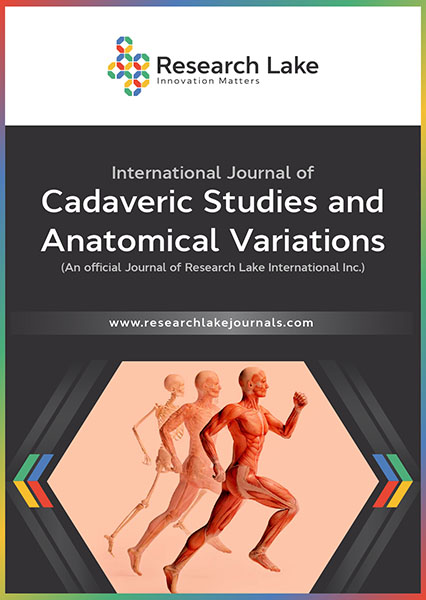Accessory Right and Left Hepatic Arteries in a 69 year-old White Female Donor with a Duplicated Inferior Vena Cava: Anatomical and Surgical Significance
Accessory Right and Left Hepatic Arteries with a Duplicated Inferior Vena Cava
Abstract
Hepatic artery variations are relatively common findings in patients with an array of findings that were categorized and quantified in the Michels classification system. Findings of an accessory right and left hepatic artery were found in a 69 year-old white female donor with a duplicated inferior vena cava during routine anatomical dissection (Michels type 7 variation). Research supports that the hepatic artery variations can be due to either failure of regression of ventral anastomosis between the dual aortas or failed regression of fetal hepatic blood flow. Given the concurrent development of the IVC and aortic branches during the fourth to seventh week of gestation, this patient’s duplicated IVC and abnormal CT and SMA anatomy are likely related, both a result of failure of regression of fetal vasculature. There are no known associated comorbidities with this vascular variation however it is clinically significant when undergoing any hepatobiliary surgical procedures and suggests an increased risk for hepatic ischemic events.
Copyright (c) 2024 Julius Shepard, Kaitlin Porter, Maria Ximena Leighton, Gary Wind, Elizabeth Maynes, Keiko Meshida, Kerrie Lashley, Rodrigo Mateo, Jordan Dimitrakoff, Teresa Buescher, Joanne Lenert, Guinevere Granite

This work is licensed under a Creative Commons Attribution-NonCommercial 4.0 International License.
Copyright © by the authors; licensee Research Lake International Inc., Canada. This article is an open access article distributed under the terms and conditions of the Creative Commons Attribution Non-Commercial License (CC BY-NC) (http://creativecommons.org/licenses/by-nc/4.0/).















